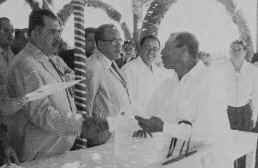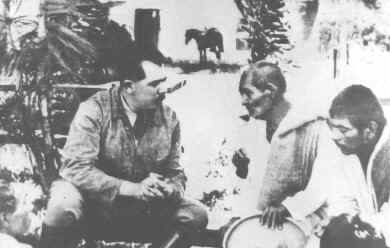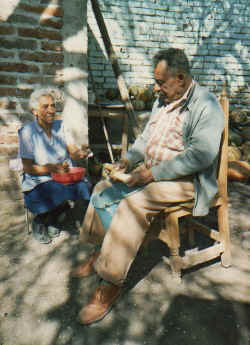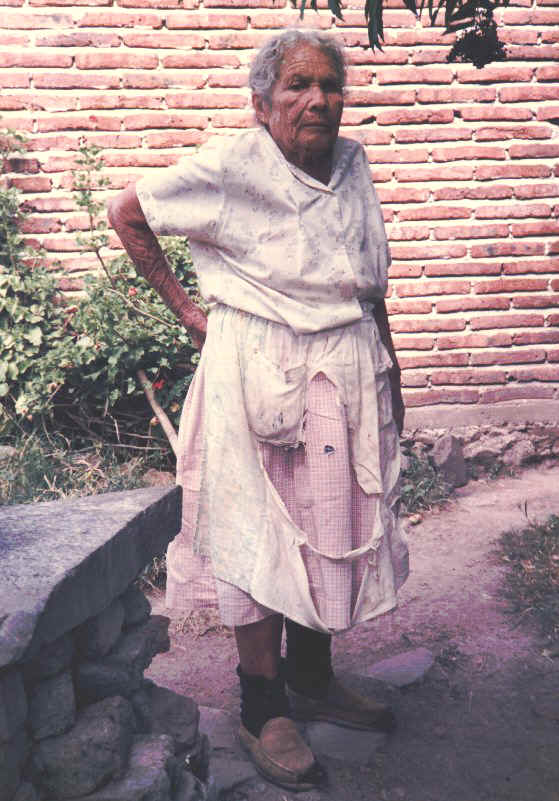 Lázaro Cárdenas distributing ejido land titles
Lázaro Cárdenas distributing ejido land titles Lázaro Cárdenas distributing ejido land titles
Lázaro Cárdenas distributing ejido land titles
The struggle for land reform began in some Ciénega communities before the outbreak of Madero’s armed insurrection against the government of Porfirio Díaz, and some land was distributed to peasants before the period of the Cárdenas presidency, notably under the radical governorship of Francisco Múgica at the start of the Twenties, and under Cardenista auspices during the General’s own period as civil governor at the end of that decade. The region was, however, distinguished more for its adherence to the Cristero cause than for its popular enthusiasm for agrarian reform up to the 1930s. The cause of agrarismo did receive an impetus from the return of large numbers of migrants from the United States, as a result of the Great Depression and mass deportations that followed, at the very moment when Cardenismo finally secured political power at state level. But that power was keenly contested by a landlord interest which still conserved substantial social power despite the Revolution and had strong ideological backing from the Church. Many of the former migrants (norteños) had, like the famous Michoacán agrarian leader Primo Tapia from Naranja, whose career was charted by anthropologist Paul Friedrich, returned from the United States equipped with radical political ideas drawn from the international socialist movement. Yet the regional balance of power created a situation favouring pragmatism over pursuit of ideals, and violence proved a means thinly justified by ends on both sides of the struggle.
 Lázaro Cárdenas encouraging peones to solicit an ejido grant
Lázaro Cárdenas encouraging peones to solicit an ejido grant
The association of agrarismo with the figure of the violent cacique (local boss), who frequently used his precarious power to benefit his kin and clients materially in terms of land allocation at the expense of other members of peasant communities, did little to strengthen the mass base of Cardenismo in the region of its birth. Furthermore, the precise nature of the Cardenista project remained full of ambiguities. Since the days of Primo Tapia’s state-wide Liga de Comunidades y Sindicatos Agraristas, the radical leaderships of the agrarian reform movement had favoured a model of the ejido based on collective cultivation of the land, and such systems were maintained through violence in some of the indigenous cacicazgos. This too proved an unattractive paradigm to most potential beneficiaries of land reform in the Ciénega, but it was the system imposed on the former peones acasillados (resident workers) of the ex-hacienda of Guaracha, when the estate was expropriated by presidential decree in October 1935, in the face of the opposition of a majority of the peons themselves.
Soundclips are available, with scrolling translations, on the online version of this site, which has a slightly different design and can be found at http://nt2.ec.man.ac.uk/multimedia/
In this clip, Jesús Inocencio expresses her disillusion about the outcome of the land reform.

Cleofas Prado and his wife Rosa Inocencio. Cleofas was one of only a handful of Guaracha peones who supported the Cardenista land reform movement actively in the 1930s, committing himself to the cause at the age of 17.

Jesús Inocencio, widow of the original Cardenista agrarian leader in Guaracha, Pablo Canela, a former US migrant who died at the hands of an assassin paid by the hacienda in 1933.